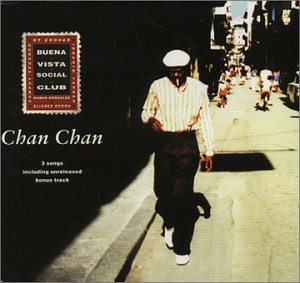President Barack Obama’s visit to Cuba later this month has its many detractors both here in the U.S. and in Cuba. Normalizing relationships is beneficial for both countries, for the region, and especially for ordinary Cubans, but Cuba will no doubt change. I wonder what will be lost.
I visited Havana in 2009 so I could see it as it is before America, with its fast food and chain stores, returned and reduced everything to bland sameness. Here are a few things I hope won’t disappear.
Callejón de Hamel
Located between Calle Arumburu and Calle Hospital and about 10 minutes’ walking distance from the US Interest Section (now the consulate) in Vedado, Callejón de Hamel pulses with Afro-Cuban music starting at about 11 a.m. on Sundays. The rhythms, the vibe uniquely Cuban.

All around are murals by well-known local artist Salvador Gonzáles Escalon.


Centro de los Orishas, Regla
Located about 20 minutes’ drive from Havana, the Centro de los Orishas in Regla is an open-air museum with wooden sculptures that depict the santería gods, Obbatala, Yemaya, Chango, Ochun, Babalu Aye, Eleggua and Ochun.


Billboard Free Cuba
Probably the first thing you’ll notice in Cuba is that there is no commercial advertising, no billboards hawking products. Instead, there are murals and signs extolling the revolution, and the country’s achievements.
We I found this 300m mural on Mercaderes Street, across from the Marqués de Arcos mansion. Created by the artist, Andrés Carrillo, along with the architect Jaime Rodríguez, sculptor Nicolás Ramos Guiardinú and students from the San Alejandro Art Academy, the mural is made up of 52 panels that depict 67 outstanding historical and artistic figures in Cuba.

Translated, this mural proclaims, “I live in a free country.” I’m sure the irony isn’t lost on the Cuban people.
Ernesto ‘Che’ Guevara
I found this etching of Ernesto ‘Che’ Guevara, the Argentine-born doctor, guerrilla leader and a major figure in the Cuban Revolution on a sidewalk.
And this one across from Plaza de la Revolución (if you’ve ever seen video of Fidel Castro speaking to a multitude of people, that’s where they’d gather). Interestingly, it almost faces the statue of José Martí, another important historical figure.
José Julián Martí y Pérez
There are several memorials to José Julián Martí y Pérez, a poet, journalist, revolutionary and national hero who was born in Havana more than 160 years ago and is revered as the father of the revolution.

However, to me, this one shows Martí’s humanity.
The inscription at the base reads, “to timely prevent with the independence of Cuba that is spreading through the Antilles the United States and fall with that additional force over our American lands. All I have done so far, and will do, is for that.” – Jose Marti, May 18, 1895, hours before dying in combat.
Havana’s Classic Cars
You’ll see these classic American made cars all over Cuba. Some, like this one, are surprisingly in pretty good condition. I wonder how quickly their Cuban owners will exchange them for much needed cash (and if the government will allow it).


Black Flags
One thing that, thankfully, has disappeared are the Black Flags. On February 6, 2009, the Cuban Government hoisted 138 black flags, each with a star, to commemorate the lives that were lost during the Bay of Pigs and other tragic events that the Cubans have attributed to the U.S. Government. Although the U.S. had no diplomatic relations with Cuba since 1961, it maintained a presence in Havana.
This photo doesn’t show it but the U.S. Interest Section is to the left of the flags. The building is several floors high and on the outside, near the roof, which lined up near the top of the flags, was a crawling informational sign with news and political information (Cuba controls information its citizens are exposed to). The thinking is that the government placed the flags there to obscure the crawling sign. The flags were removed in 2011 so the president will not see them when he arrives in Cuba later this month.

Change is inevitable, even in a communist country like Cuba. The challenge for the government is to manage the change as well as the expectation of its citizens, many of whom are like my friend, Emilio, who’s happy to establish relations with the U.S. As Emilio said, “La gente esta muy contenta por el restablesimiento de las relaciones entre los dos paises.”
Linking with Travel Photo Thursday































































